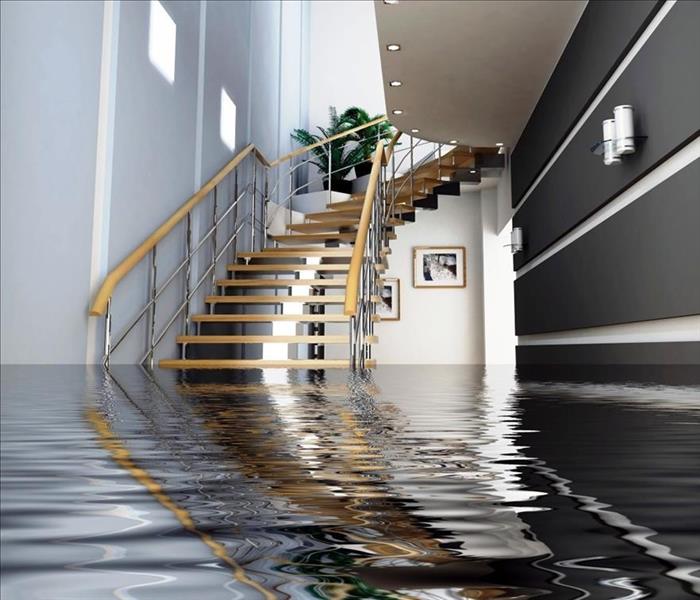How do you dry out water damage?
1/31/2020 (Permalink)
After any water damage situation, your primary focus should be safety first:
- Is it safe to stay in the house?
- Electrical and "slip and fall" hazards are some of the most prevalent concerns.
- Only do activities that are safe for you to perform.
- Wet materials can be VERY heavy. Be careful!
Once a building has been exposed to a large volume of water, either floodwater or rainwater, steps must be taken to dry the building out, assess damage, and plan for repairs and restoration.
Before starting to dry out, make certain to address health and safety concerns. Safety must come first; do not endanger yourself, your family, or other occupants. Assume all power lines are live. Do not trust the fact that power may be off all over the neighborhood; turn off the power to your house. Check for the odor of leaking LP or natural gas and turn off these services. Be aware that floodwaters may be contaminated with sewage or animal waste and present a health hazard. During clean up, protect eyes, mouth, and hands. If you are uncomfortable when entering your house and have any question regarding personal safety, do not go inside, but have a professional make an assessment.
For the actual process of drying, it’s important to be thorough, as there are many things beyond what you may see at first that can potentially retain water. A good case example of this is the attic. Insulation can easily get soaked and lose its effectiveness. Wet boxes or storage can lead to potential cracks in the ceiling below.
As a start, you want to open the windows in your home in order to promote natural air flow, but professionals will bring along added equipment to help in this process. In addition, the same dehumidifiers used to keep mold from growing after the initial cleanup will serve a similar purpose during the dry out stage. Wallpaper may be a bit of a surprise here, but the reason for this is that it creates a “seal” that holds moisture in the wall. Other extreme but necessary methods may include drilling holes into the drywall in order to help them dry out faster.
We are water damage specialists who get started promptly to get your property dry and back to pre-water-damage condition. Using advanced water removal and drying equipment and scientific drying principles to get your property dried quickly,
For a stress free claims process, SERVPRO of Martin County can help manage the insurance paperwork and process. Call for details: (772) 334 8762






 24/7 Emergency Service
24/7 Emergency Service